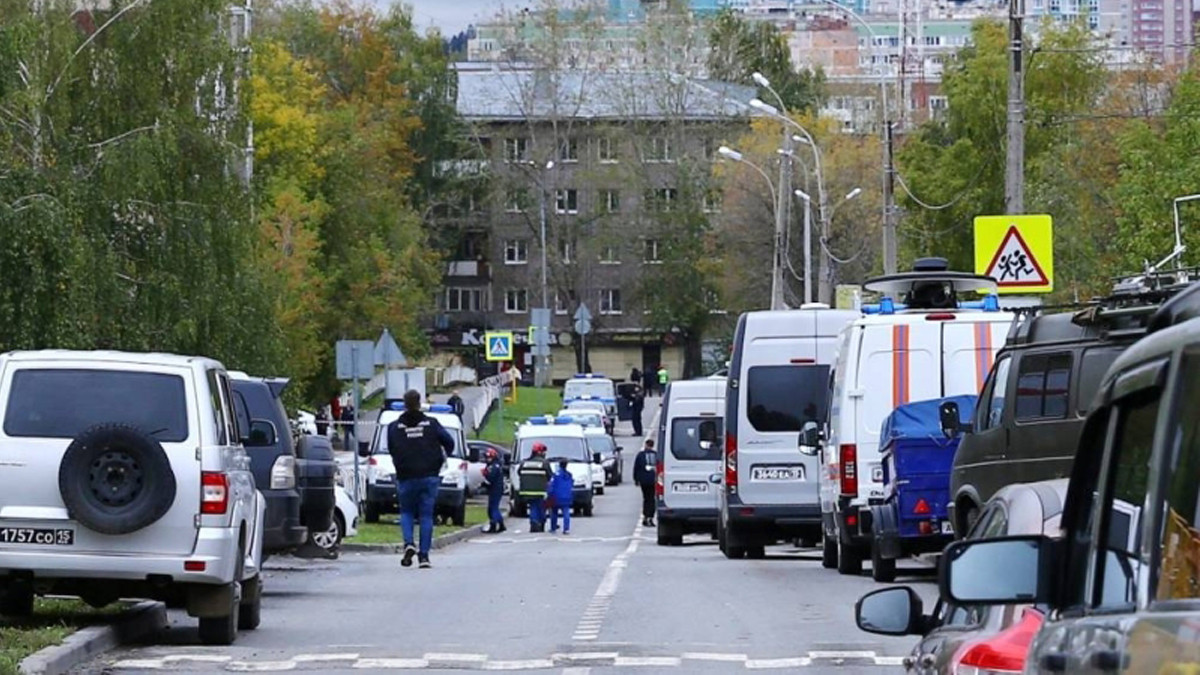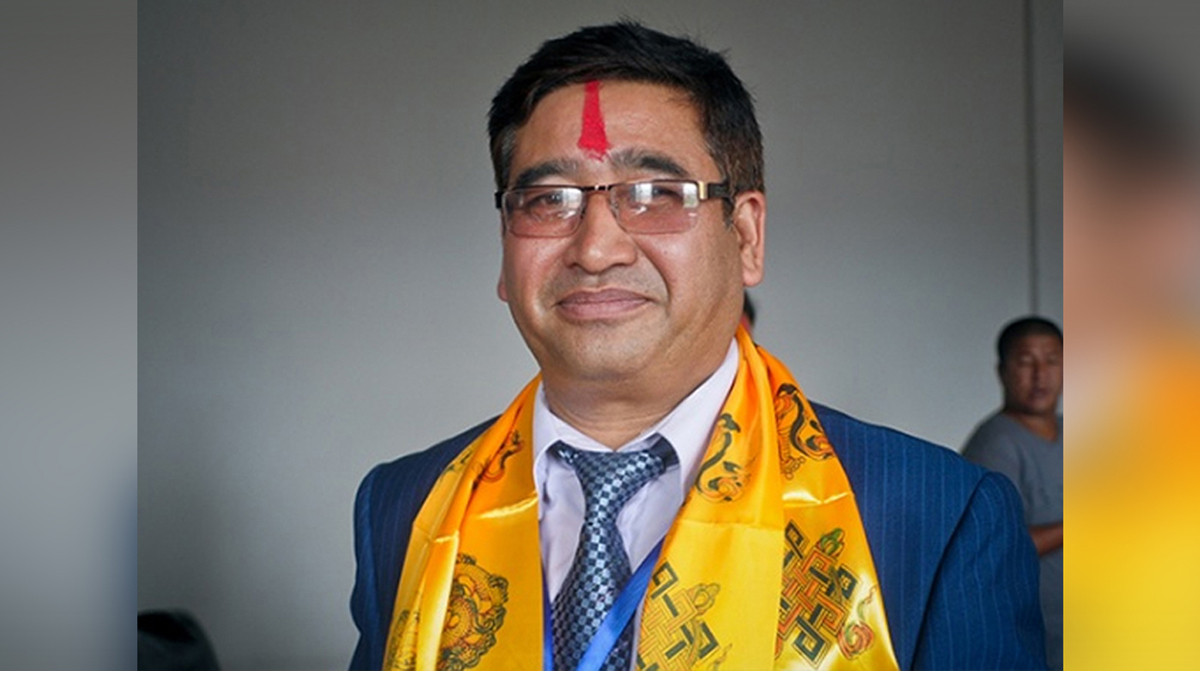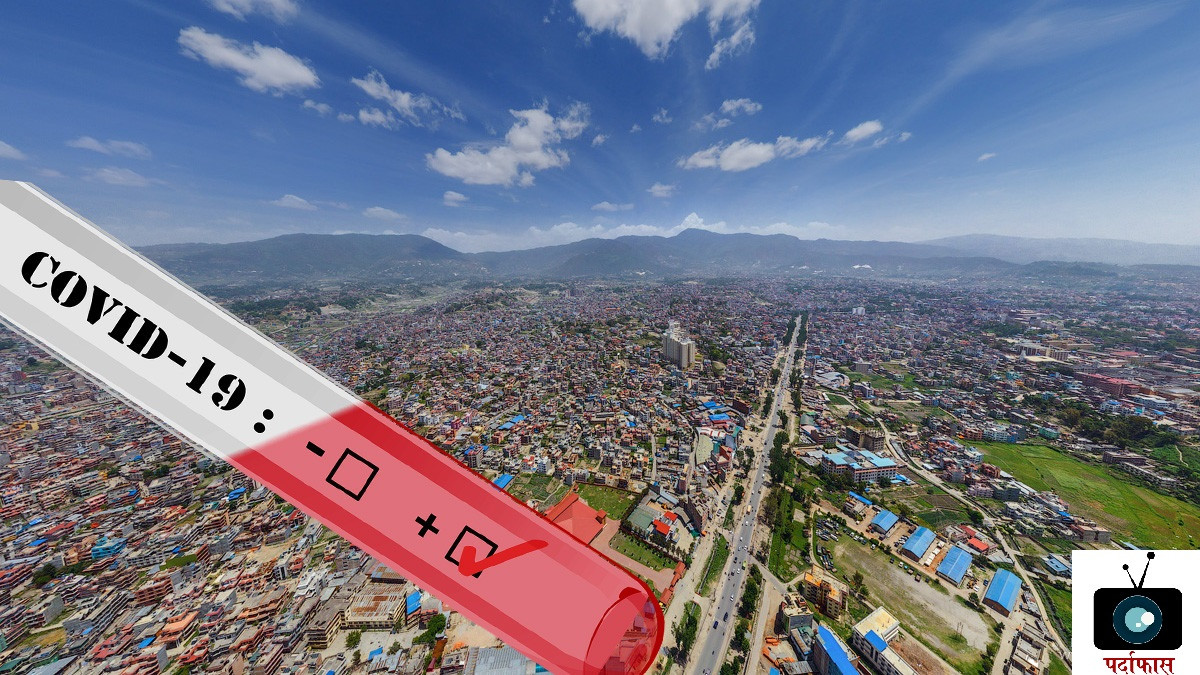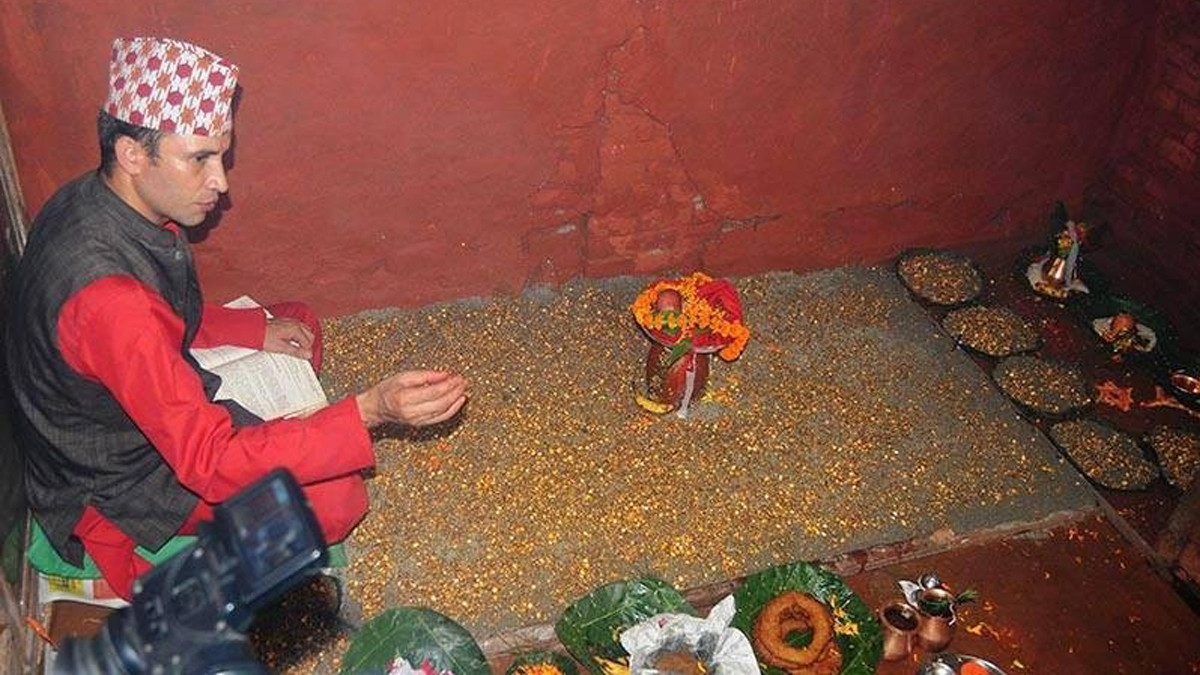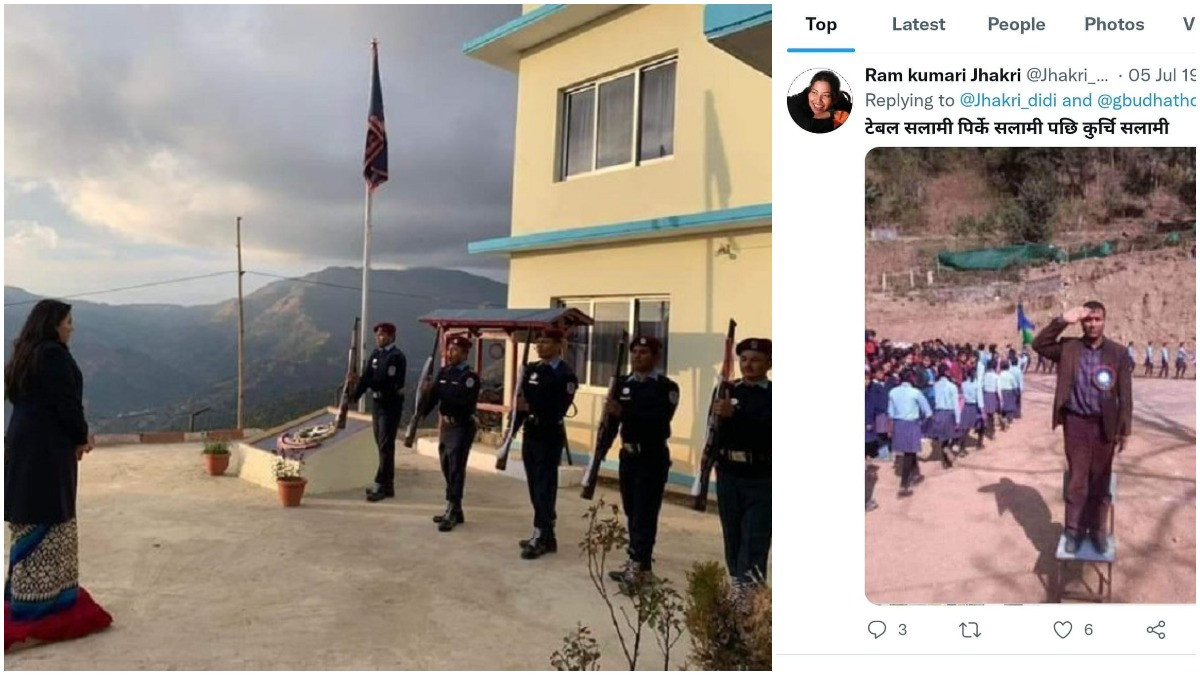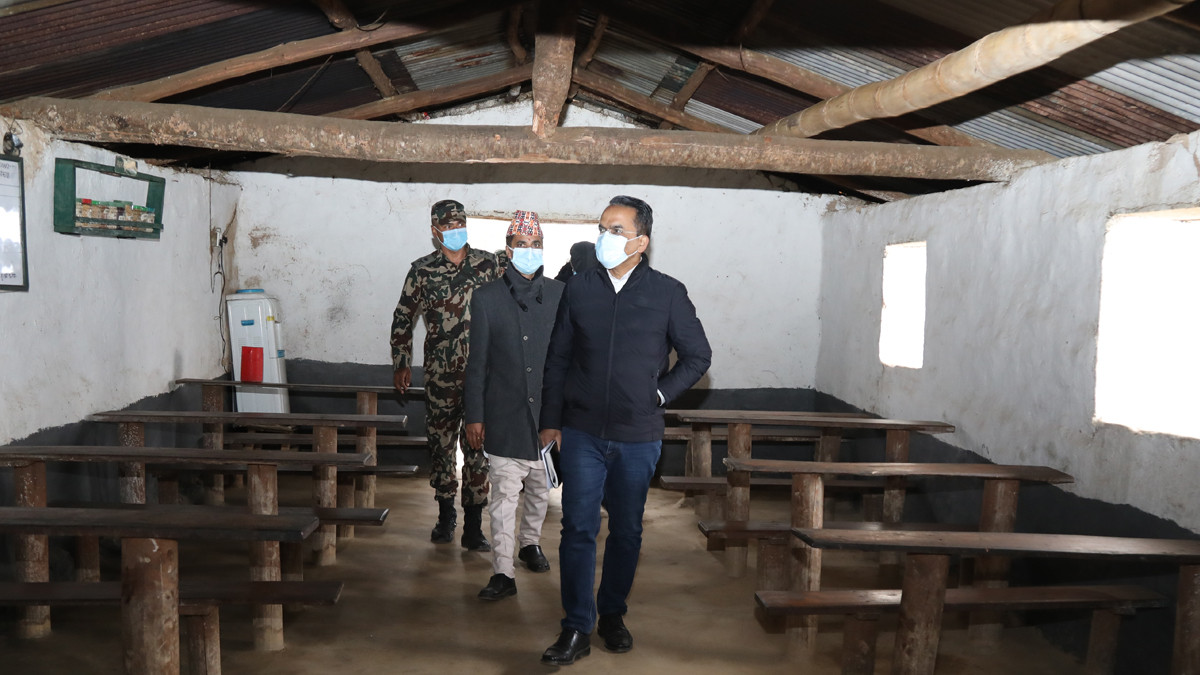 Poudel and Sharma inspecting a recently formed barrack out of the conflict-era bunker.Photo: Nepali Army
Poudel and Sharma inspecting a recently formed barrack out of the conflict-era bunker.Photo: Nepali Army
The Nepali Army briefed Dr. Vishwanath Poudel, Vice-Chairman of the National Planning Commission and Kiran Raj Sharma, Secretary of Defense, and other senior officials of the Ministry of Defense and Finance about their Vision 2030 and the Bunker to Barracks Campaign.
After the presentation on Vision 2030 and Bunker to Barracks in the presence of Chief of Army Staff Prabhuram Sharma, the participants were given on-site observation of barracks in Okhaldhunga, Khotang and Ramechhap districts, according to the Military Public Relations and Information Directorate.
The bunkers built by the Nepal Army for security during the conflict era were later turned into hazardous army barracks. The State Management Committee of the House of Parliament had instructed to displace the bunkers after inspecting the military barracks across the country in 2067 BS. The committee concluded that there were a risk of floods, landslides in the rainy season and snake and mosquito bites in the summer due to the compulsion to live in such bunkers.
Similarly, the soldiers were forced to live a miserable life in winter. The committee was of the view that the morale of the army officers was also declining due to the lack of reliable accommodation in such bunkers. In 2069 BS, Mitra Lal Gurung, a soldier working at Samatpur Gulm in Dolpa, died after being buried in such bunker.
Work is being done to replace the bunker and convert it into a barrack as per the 10 year plan from the Fiscal Year 2066/67.
Army Spokesperson Narayan Silwal said that the Bunker to Barracks program would take some time to complete. According to him, the program could not be completed on time due to lack of budget, earthquakes and epidemics.
The Bunker to Barracks program had taken the form of a campaign since the tenure of retired Chief of Army Staff Chhatra Man Singh Gurung. This program is being conducted by the Central Committee for Physical Construction and Infrastructure under the chairmanship of the Vice Chief of Army Staff.
Although the army has been in operation for more than 11 years, it has not been able to achieve the expected target.
According to the Military Public Relations and Information Directorate, it is necessary to build 5,850 structures to displace army bunkers across the country. According to spokesperson Silval, 30 to 40 percent of the target work has not been completed yet.



